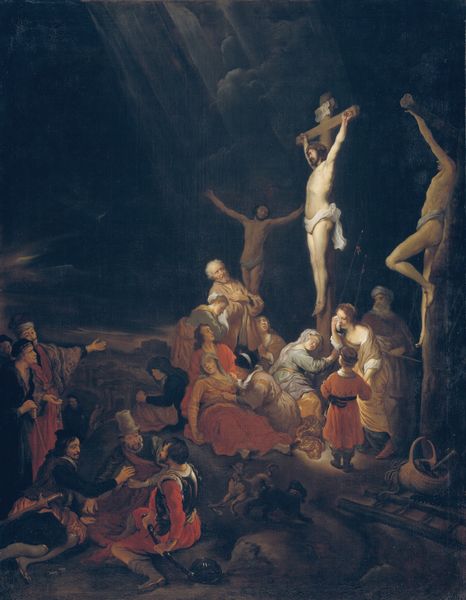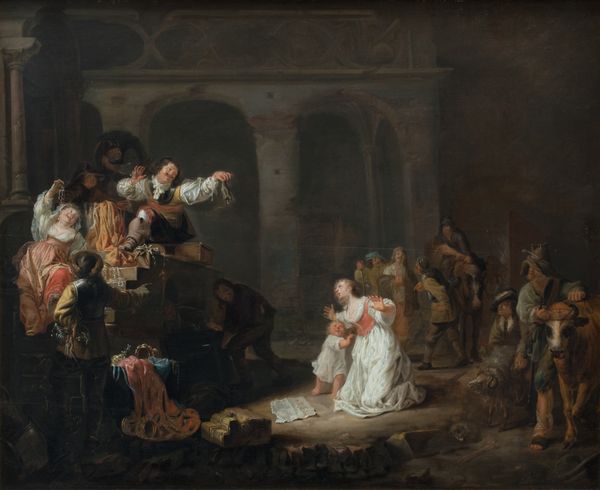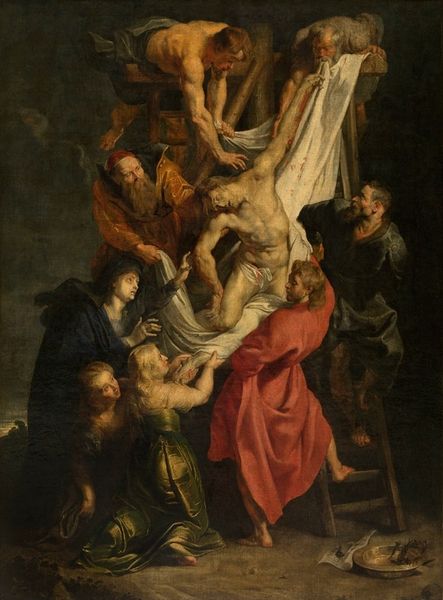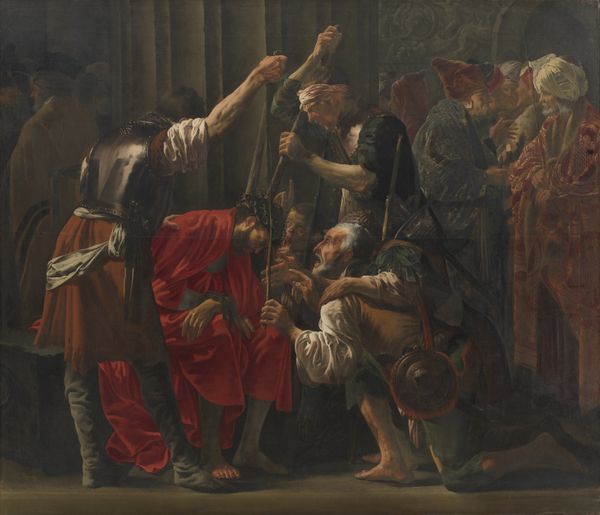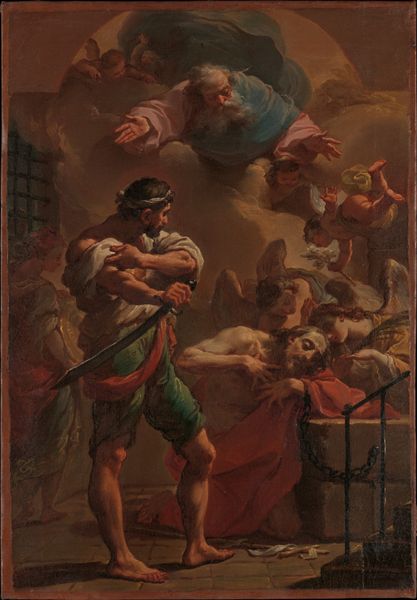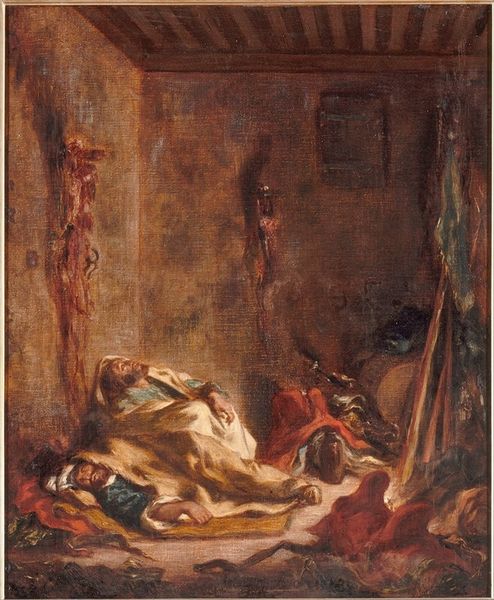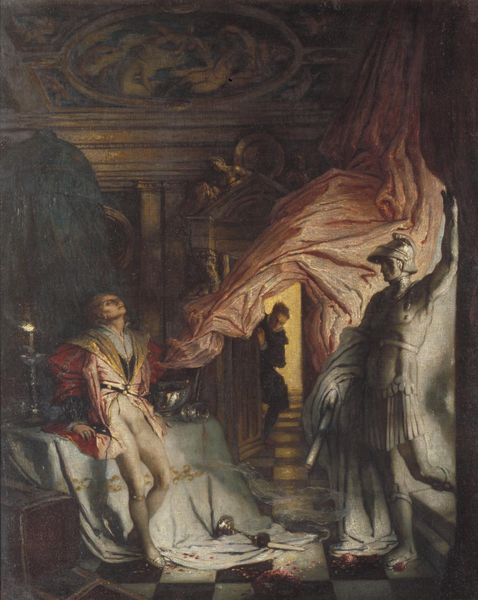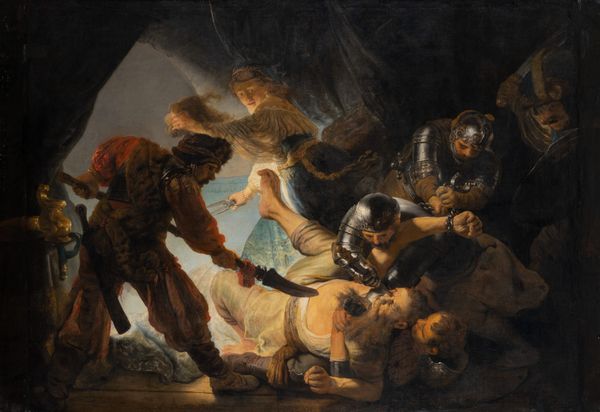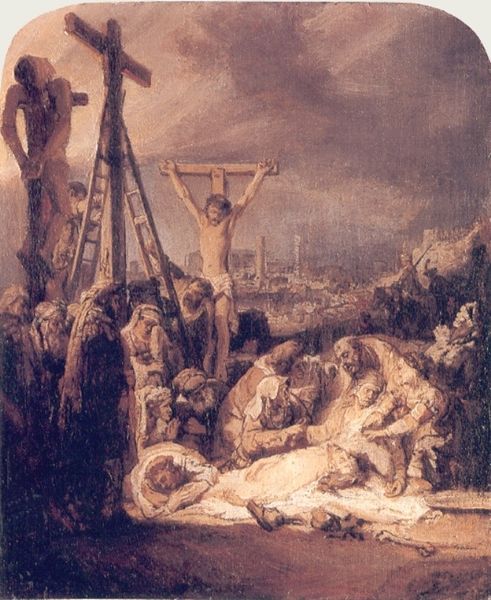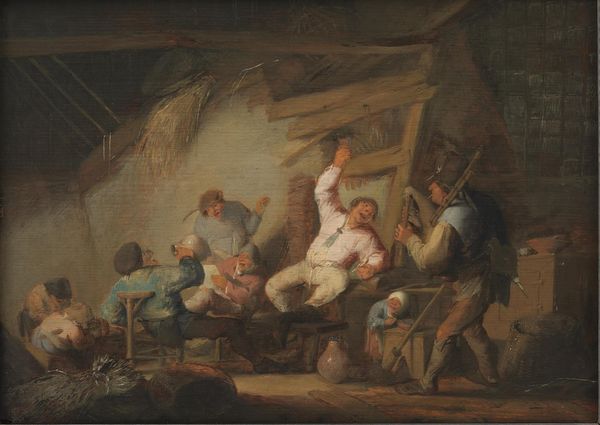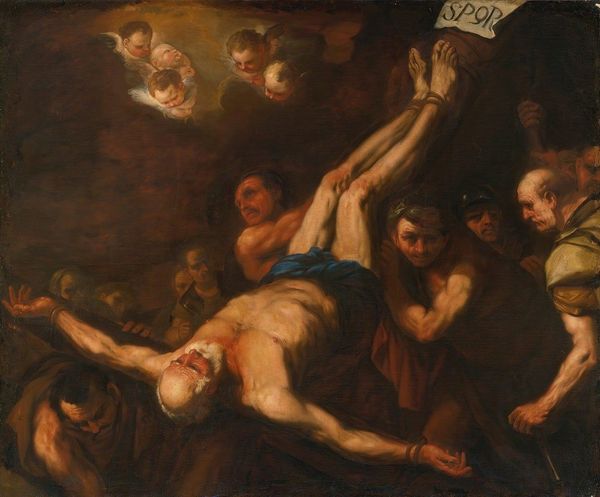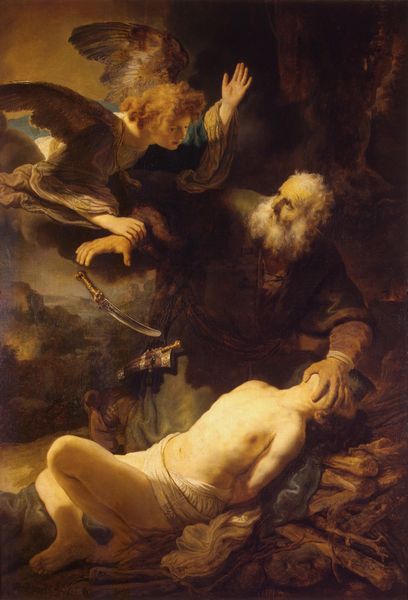
painting, oil-paint
#
baroque
#
painting
#
oil-paint
#
genre-painting
Dimensions: height 114 cm, width 98 cm, depth 8.5 cm
Copyright: Rijks Museum: Open Domain
Editor: This is "The Slaughtered Ox," an oil painting possibly created between 1635 and 1655. It now resides in the Rijksmuseum and is attributed to Abraham van den Hecken. It's incredibly…stark. The overwhelming size of the carcass and the interior's shadowed setting are definitely factors. What's your interpretation of this arrangement of elements? Curator: I'm immediately drawn to the light's orchestration. Notice how it delineates the hanging carcass, pulling it forward. This dramatic use of light is, in my view, paramount to the composition. How do you feel the materiality of the paint contributes? Editor: Good question. There’s an obvious tension with how smoothly the figures on the left are painted versus the grittier textures on the ox. Almost as though different material realities exist in the same space. Do you think it's intended to focus attention on the painting as a work of art rather than illusionistic trickery? Curator: Indeed! I suspect the painter is deliberately reminding us of the picture plane. Van den Hecken seems keenly aware of surface quality. He does this, also, through the use of linear perspective: a visual construction predicated on making art, rather than a mimetic window on the world. Editor: That makes perfect sense! I had originally assumed the contrast in textures was solely to create realism, but viewing it through a formalist lens really shifts the interpretation. It shows the artist’s deliberate engagement with materials and the act of painting itself. Curator: Precisely. And, understanding those principles enables a greater aesthetic appreciation. What was once only macabre reveals an intentional act of picture-making.
Comments
No comments
Be the first to comment and join the conversation on the ultimate creative platform.

